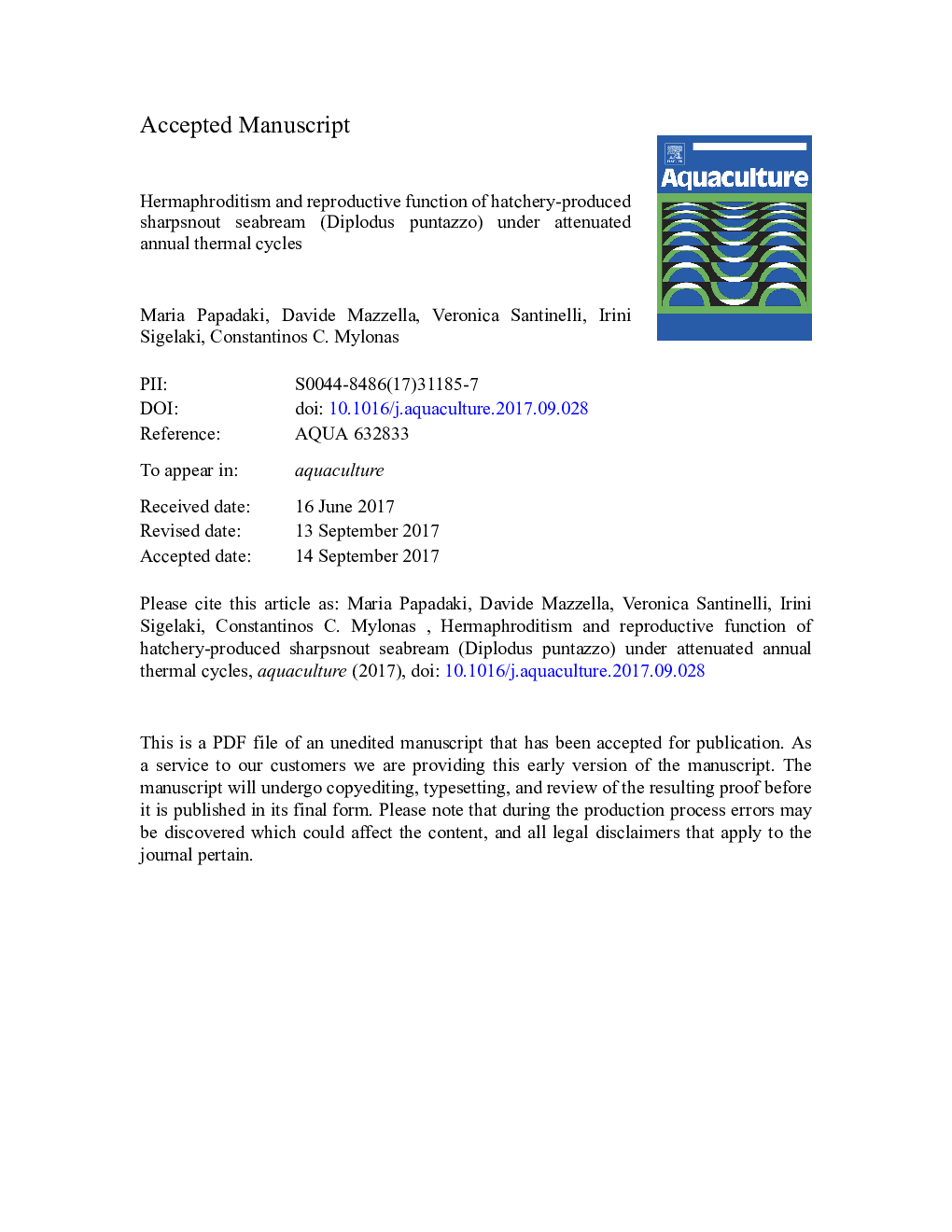| Article ID | Journal | Published Year | Pages | File Type |
|---|---|---|---|---|
| 5539111 | Aquaculture | 2018 | 47 Pages |
Abstract
Acquiring more knowledge on the reproductive biology of the sharpsnout seabream (Diplodus puntazzo) can improve our ability to control its reproduction and enable hatcheries to reconsider this fish as a potential species for the Mediterranean aquaculture production. We investigated hermaphroditism and reproductive function in a hatchery-produced broodstock over a long period of 6 years, which includes sex differentiation, puberty and four consecutive annual reproductive seasons, at relatively constant water temperatures of 18-20 °C, which are typical of borehole seawater supplies used frequently in marine hatcheries for biosecurity reasons. At the end of the first year of life, the gonads were bisexual and were classified into three different categories: mainly testicular tissue with rudimentary ovarian tissue (Mf), substantial amounts of both tissues (MF) and mainly ovarian tissue with rudimentary testicular tissue (mF). Fully female (F) gonads appeared already in 1 + years old fish, whereas fully male (M) gonads appeared for the first time in 2 + years old fish. The sex ratio (F:M) of the studied populations during the first 6 years of life in all age classes was not different from 1:1. Therefore, no annual restructuring of the broodstock is necessary in order to avoid the development of skewed sex ratios, since once functional sex is established it does not seem to change in the following years. Furthermore, the use of attenuated annual thermal cycling regimes did not seem to affect the annual gametogenic cycle and full maturation of this species, though spontaneous spawning was still missing and the fish exhibited the typical problems reported for this species in captivity.
Related Topics
Life Sciences
Agricultural and Biological Sciences
Aquatic Science
Authors
Maria Papadaki, Davide Mazzella, Veronica Santinelli, Ioannis Fakriadis, Irini Sigelaki, Constantinos C. Mylonas,
